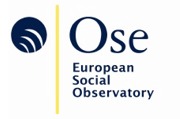in Natali D. (Ed), Social developments in the European Union 2013, ETUI, OSE, Brussels, 2014, pp. 131-159.
Towards a European minimum income? Discussions, issues and prospects
Never before has there been such social inequality and poverty in the European Union (EU), and the situation has continued to deteriorate since the beginning of the severe economic and financial crisis affecting Europe. The EU’s sometimes drastic fiscal austerity policies have contributed to this growth in poverty and inequalities. Such is the worrying assessment that must be drawn for 2013 (European Commission 2014, SPC 2014). In 2012, almost 84.1 million Europeans – 16.9% of the population – were living below the relative poverty line – a threshold set at 60% of the equivalent national median income. According to the extended definition of poverty and social exclusion used to set the EU’s quantified poverty reduction objective in the Europe 2020 Strategy, more than 124.5 million Europeans are in this situation, i.e. almost 1 in 4 people in Europe (24.8%) (Eurostat 2013). This is a shocking figure, especially since poverty has become more severe and more persistent since the beginning of the crisis (European Commission 2013). These European averages mask greatly varying situations between European countries. There is increasing divergence between, in particular, Northern countries, on the one side, and Southern or ‘peripheral’ countries on the other, with converging situations within these groups, even between eurozone members and non-members (European Commission 2014).
